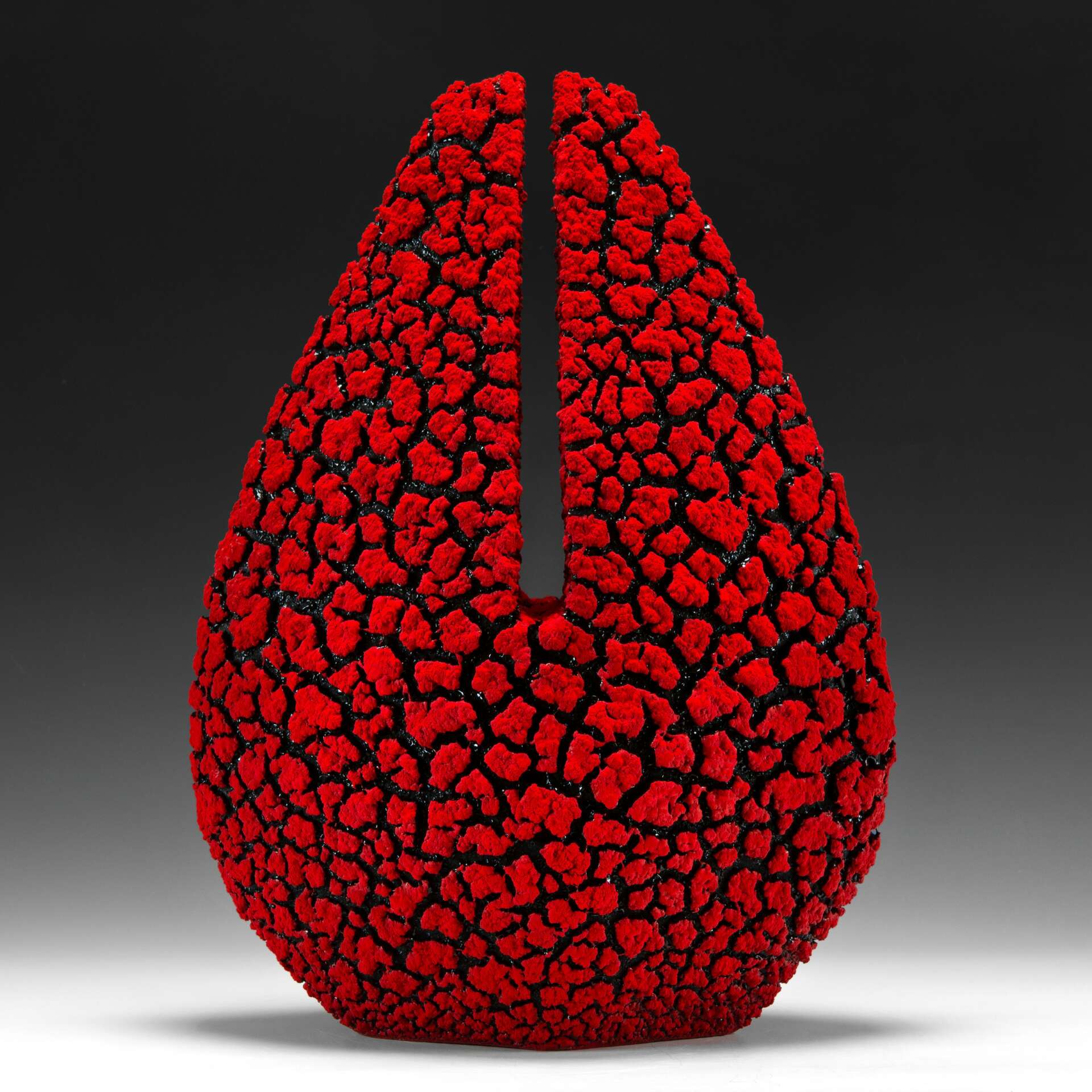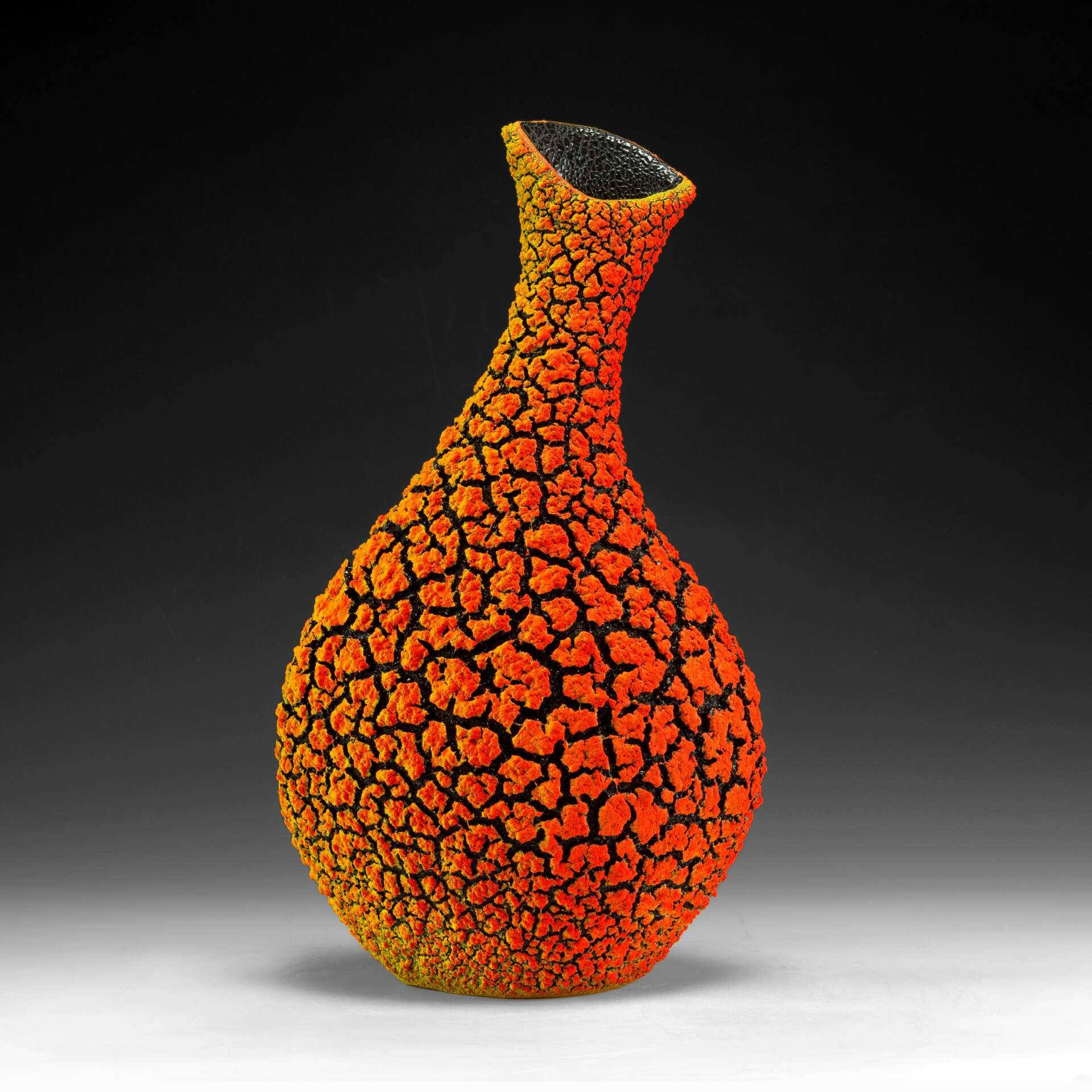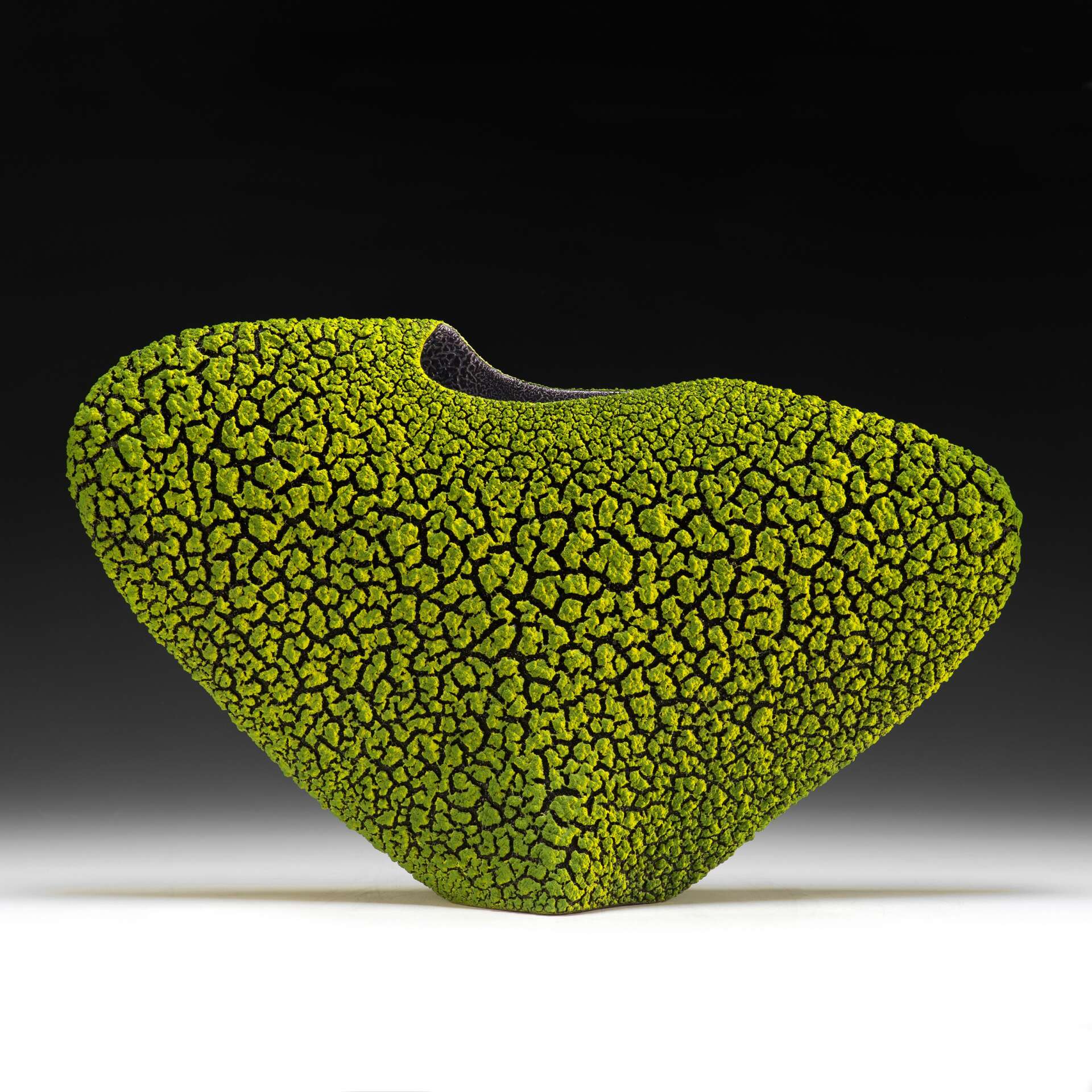We caught up with the brilliant and insightful Randy O’Brien a few weeks ago and have shared our conversation below.
Randy, appreciate you joining us today. When did you first know you wanted to pursue a creative/artistic path professionally?
My professional path as an artist evolved over several years before I made the commitment to become a full time artist. Ceramics has a steep learning curve. I was fortunate to be in the right place at the right time to allow me to sell my (at the time very rudimentary) work while I was developing my skills.
I was a student majoring in geology at UC Santa Cruz in the mid 80’s. One of the colleges had a student run pottery co-op in a dorm basement. I had had limited pottery instruction before, but really not much more than the basics. This co-op had regular pottery sales once a quarter. We would put up flyers announcing the day and then set our pots out on picnic tables in front of the cafe. Within a year I was making enough from the sales to cover my living expenses. Financial aid covered my tuition. This gave me an unrealistic view of how easy it would be to be a full time potter. I had the utmost confidence that I could make a living doing this. If I could make and sell enough pots to pay the bills while I was a student, it would be no problem to do this full time on my own, right?
I switched my major to art, took workshops with well known potters and apprenticed to Al Johnsen at Scott Creek Pottery to develop my skills. By 1988 I was a year away from a degree in geology and a year away from a degree in art. I decided to take the leap to being a full time potter, dropped out of school and moved to Homer, Alaska to set up a pottery studio.

Randy, love having you share your insights with us. Before we ask you more questions, maybe you can take a moment to introduce yourself to our readers who might have missed our earlier conversations?
I finished my last year of high school in 1980 as a foreign exchange student in East Malaysia on the island of Borneo. It was there that I entered a pottery studio for the first time. There was something about the atmosphere in the studio that was very familiar and comforting. A year later while I was a student at UC Berkeley, I began taking extra curricular pottery classes. A year in Malaysia, however, left me with a longing for travel which I couldn’t resist. For the next couple years I worked summers in a cannery in Alaska and traveled through India, Hong Kong and China.
I returned to school at UC Santa Cruz in the mid 80’s where I acquired the necessary skills to make a living as a potter. I moved back to Homer, Alaska in 1988 to set up a studio making functional pottery. It was in Alaska that I started experimenting with glazes. I had the idea for a brightly colored cracked surface but was unable to get it to reliably adhere to the clay. I went back to art school in 1994 at the New York State College of Ceramics at Alfred University, receiving a BFA in 1996. My focus was on low fire special effect glaze surfaces. I kept coming back to the original cracked surface idea I had in Alaska, but it still technically eluded me.
A few years later in 2001 I finally figured out how to reliably create the surface I was looking for. Its uniqueness has opened doors for me to galleries and the top art festivals in the country. I am still constantly experimenting with new glaze surfaces in my studio, but the work I present to the public is the cracked surface that is now my trademark. The glaze itself can be up to 2 inches thick before it is fired. It shrinks down considerably when it fuses in the firing but can end up being 3/4″ of glass over the clay.

Can you share a story from your journey that illustrates your resilience?
I never framed my goal as being able to make a living as an artist. I thought of it from the perspective of wanting to spend as much time as possible in my pottery studio. The more money I made in my studio, meant the less money I had to make outside my studio. The first decade as a potter found me working 16 hour days, 7 days a week. It barely paid the bills, but I was able to spend every waking hour in my studio, which was my goal. I still work 7 days a week but try to keep it to no more than 9 hours a day.

We often hear about learning lessons – but just as important is unlearning lessons. Have you ever had to unlearn a lesson?
The idea that you have to have a low priced item that is your bread and butter. What you want to do is create something that has more personal value to the customer than what it cost them. My best selling item is a sculptural vase that sells for around $1000. People fall in love with it and the price is not an issue. It sells far better than my lowest priced piece at $150.

Contact Info:
- Website: www.randyobrien.net
- Instagram: @randyobrienceramics
- Facebook: https://www.facebook.com/obrienceramics
- Youtube: https://www.youtube.com/@randyobrien
Image Credits
Wilson Graham


